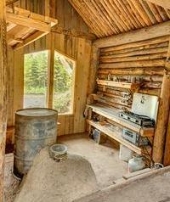Kenneth Elwell wrote:You didn't mention whether this panel is inside the door or outside in the weather... Outside in the weather, you want to have a moisture barrier to keep the insulation dry.
Definitely going to be inside the building. I suspect having it outdoors would require a much hardier design and likely a lot more material for it to be effective. We also want to have a more attractive interior to the classroom, and we think a natural wood wall (should we stick with this design) would level-up the interior.
Kenneth Elwell wrote:Another option would be greenhouse film and wiggle-wire channels added to the outside of the door frame, outdoors. This would be quick to implement, and do a good job of air-sealing the whole opening without fussing around the door gaskets, tracks, and joints in the door.
I like this, as it seems less labor-intensive and intrusive than things inside the building. I'll approach Paul with this idea and see how he thinks this might work.
WIlliam Bronson wrote:Waxed fabric or paper,aluminum foil, sheep pelts, natural rubber,tree resin or gum, or some combination of these could help create an airtight wall.
These may be materials that could augment the outdoor seal that Kenneth describes above. Nice. :)
Kenneth Elwell wrote:Exploring the greenhouse film day lighting option... Your panels seem heavy and "permanent" as in "Do not open until Spring". What about rolly shelves with insulation on the back, which could be parked in front of the garage door, but also moved if desired?
Another useful idea! I think the rolly shelves are tall enough. Maybe not wide enough, but we could line two of them up together, reconfigure the room somewhat, and I think this could be managed.
I appreciate everyone's input! If anything else comes to mind, please post in here. Thanks again! :)












